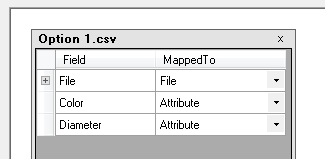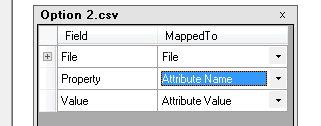Adding Files and Attributes
With the VizSeek Sync App, there are two different ways to add files. The first way is to simply add a folder, and all the subfolders and files inside that folder will be added to VizSeek. The other way is to use a CSV, with each row in the CSV having the name or path of the file. In this method, you can also include any attributes you want added to each file. Both methods are described in detail below.
Adding with folders
- In the Home screen, click the folder icon next to Add Folder.
- In the Browse for folder window, find the top-most folder that you would like to sync. The app will sync all the sub-folders and files in that folder.
- Select the folder and click OK. The app will add the folder path to the Resource list. You can right-click and click Sync to start syncing that folder.
Repeat this process for all the folders you would like to sync.
It’s important to note that synced folders are always just reflections of what is in your file system. Synced folders are not editable from VizSeek. You cannot change any folder or file names in VizSeek or move files around in VizSeek. You cannot delete files from a folder in VizSeek. In other words, if you delete a file from its folder in your file system and then perform a sync, that change will be reflected in VizSeek, but you do not have the ability to delete a file from VizSeek.
Adding with CSVs
The CSV option gives you a way to upload a comma-separated values (.csv) file that contains the files, plus optional attributes, making both the shape and attributes for each file searchable.
- In the Home screen, click the icon next to Add CSV. The Add CSV window opens.
- Click the Add CSV Files... button and browse to the CSV file. This CSV file should have a column with the paths of the of folders and/or files you wish to sync, and columns for any attributes that should be added to each file or folder.
After you select the CSV file, you'll see the following:
Mapping section: The mapping section opens in the middle of the screen. This is where you'll map your CSV file's columns to VizSeek's fields.
Mapped columns tab: This section shows the columns that have been mapped so far, showing the VizSeek field labels with the mapped columns from your CSV file. Check this section as you map the columns to make sure that your mapping is retrieving the values you want.
Original file tab: This section shows your CSV file columns and values. You can use this tab as a way to see your file columns and values without having to open your file in a different program. - Map your CSV file's columns to the VizSeek fields. In the mapping section, your CSV file's columns appear in the first column. Select the VizSeek field to map to using the dropdown button.
See Mapping CSV columns to VizSeek attributes below. - When you've finished mapping your fields, click the Save button. The mapping is added to the Resource list and is ready to be synced. To begin syncing, you can right-click and click Sync.
Mapping CSV columns to VizSeek attributes
In VizSeek, there are no pre-set attributes. You can use all of your own attributes and name them anything you would like. You have two options for how you can add attributes:
Option 1: Attribute names are column headers
In this option, your .csv file might look something like this:
| File | Color | Diameter |
| 1.stl | Red | 10 |
| 2.stl | Blue | 15 |
| 3.stl | Green | 20 |
In this case, all your files have the same attributes: for example, Color and Diameter. To create these attributes in VizSeek, you would map VizSeek's File field to the column in your CSV that contains your file/folder names. You would then map the Attribute field to each attribute column in your CSV file. Your mapping would look like this:

Option 2: Attribute names are included for each row
It may be the case that different files have different attributes. In our example, let's say that 2.stl has a Radius attribute rather than Diameter and that 3.stl has a Length attribute rather than Diameter. In this option, you would structure your CSV this way:
| File | Name | Value | Name 2 | Value 2 |
| 1.stl | Diameter | 10 | Color | Red |
| 2.stl | Radius | 50 | Color | Blue |
| 3.stl | Length | 125 | Color | Green |
To create these attributes in VizSeek, you would map the File field to the column in your CSV that contains your file names. You would then map the Attribute Name field to the column that contains your attribute labels, and you would map the Attribute Value field to the column that contains the values for each attribute.
The mapping might look like this:

Editing a CSV
To make changes to your CSV mapping, right-click the CSV in the Resource list and click Edit. You'll then be able to change your mapping and save it.
Removing a resource
When you no longer want to sync from a resource, right-click it, and click Remove and you will see two options. Clicking Files only will remove all the files (and any attributes) from VizSeek that were added using this resource, but the resource will remain in the Resources list. Clicking Files & mapping will also remove the resource from the Resources list. Resources that were stopped may also be removed in this manner.
Starting a sync
To start syncing a resource, right-click the resource and click Sync.
Stopping a sync
When a sync process is in progress, you can stop it by right-clicking that row, and click Stop Sync.
When stopping a sync, any files and/or folders that were already added will be available in the VizSeek Web application. If you start the sync again after it was stopped, the app will resume adding the remainder of the resources that weren’t already added before the stop sync.
Viewing the sync log
A log file is available so that you can see what files were synced and at what time. To view the sync log, click View in the menu bar and click Sync Log. The log file will open in a separate text application, such as Notepad.